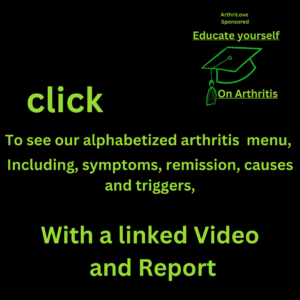
Polyarteritis Nodosa (PAN): Number 26 on the list of 100 types of Arthritis
Conquering Polyarteritis Nodosa (PAN): A Journey of Resilience and Hope
Chapter 1: A Sudden Encounter
Imagine waking up one day with unexplained muscle pain, weakness, and fever. This could be the beginning of a challenging journey with Polyarteritis Nodosa (PAN), a rare and potentially serious autoimmune condition affecting blood vessels.
 Chapter 2: Unveiling the Nature of PAN
Chapter 2: Unveiling the Nature of PAN
Polyarteritis Nodosa (PAN) is a type of vasculitis characterized by inflammation of medium-sized arteries. This inflammation can disrupt blood flow to various organs and tissues, leading to damage and dysfunction. PAN primarily affects arteries in the skin, joints, intestines, nerves, and kidneys.
Chapter 3: The Causes and Triggers
The exact cause of PAN is not fully understood, but it is believed to involve an abnormal immune response targeting blood vessels. In some cases, PAN may be triggered by infections, particularly hepatitis B or hepatitis C viruses. Genetic factors and environmental triggers may also play a role in its development.
Chapter 4: Symptoms and Signs
Symptoms of PAN can vary depending on the organs affected but may include:
- Muscle and Joint Pain: Aching or cramping in muscles, especially with movement.
- Skin Changes: Rashes, nodules, or ulcers.
- Nerve Involvement: Tingling, numbness, or weakness in extremities.
- Abdominal Pain: Due to inflammation of intestines or other abdominal organs.
- Fever: Low-grade or persistent fever.
- Fatigue: Persistent tiredness and weakness.
- High Blood Pressure: Caused by kidney involvement.
Chapter 5: Onset and Demographics
Polyarteritis Nodosa (PAN) can affect individuals of any age, but it is most commonly diagnosed in adults between the ages of 40 and 60. It affects both men and women equally.
Chapter 6: Impact on Lifespan and Quality of Life
PAN can have a significant impact on quality of life and, if left untreated, can shorten lifespan due to organ damage. However, with early diagnosis and appropriate treatment, many individuals with PAN can achieve remission and lead fulfilling lives. A proactive approach involving regular medical monitoring, lifestyle modifications, and adherence to treatment regimens is crucial for maintaining optimal health and minimizing disease activity.
Chapter 7: Pursuing a Proactive Approach
Achieving a higher quality of life with PAN requires a comprehensive and proactive approach. This includes:
- Medical Treatment: Prompt and aggressive treatment with immunosuppressive medications to reduce inflammation and prevent organ damage.
- Lifestyle Modifications: Adopting a healthy diet, maintaining a regular exercise routine (adjusted to individual capabilities), managing stress, and avoiding smoking.
- Regular Monitoring: Scheduled follow-up appointments with healthcare providers to monitor disease activity, organ function, and medication side effects.
Chapter 8: Possible Complications
Complications of PAN can be severe and may include:
- Organ Damage: Kidney failure, gastrointestinal bleeding, nerve damage, or heart problems.
- High Blood Pressure: Due to kidney involvement.
- Infections: Increased susceptibility to infections due to immunosuppressive treatments.
- Blood Clots: Risk of blood vessel blockages leading to stroke or heart attack.
 Chapter 9: Holistic Approaches and Health Discoveries
Chapter 9: Holistic Approaches and Health Discoveries
While medical treatment forms the cornerstone of PAN management, some individuals explore holistic approaches to complement traditional therapies. Techniques such as acupuncture, yoga, meditation, and dietary supplements (under medical supervision) may help alleviate symptoms and improve overall well-being.
Chapter 10: Interconnected Conditions
Individuals with PAN may be at higher risk of developing other autoimmune diseases or conditions, such as rheumatoid arthritis, lupus, or other forms of vasculitis. Close monitoring and coordination between healthcare providers are essential for comprehensive care.
Chapter 11: Embracing Resilience and Empowerment
Living with Polyarteritis Nodosa (PAN) requires resilience, courage, and a supportive network of healthcare professionals, family, and friends. Despite its challenges, many individuals with PAN find strength in their journey and inspire hope through their determination to overcome obstacles and embrace life to the fullest.